Vacation: Opportunity to See Ancient Cities
As an author of historical fiction, research requires time and energy. My wife and I joined a group this summer touring the archeological ruins of the seven churches mentioned in Revelation, as well as the sites of Corinth, Cenchrea, Athens and the non-biblical site of Knossos on Crete. We also stopped at Patmos island, where John wrote the book of Revelation and the island of Santorini, a popular destination. It was vacation, but I wanted to also see these settings for possible future stories. (A short story has already been spawned and will appear in my July newsletter. You can subscribe here.)
Even though the excavated remains and restored structures cover a relatively small area at each site, I was impressed by the size of these ancient cities and the high standard of living many enjoyed in the first century. Here Elaine and I stand on the main road of Ephesus.
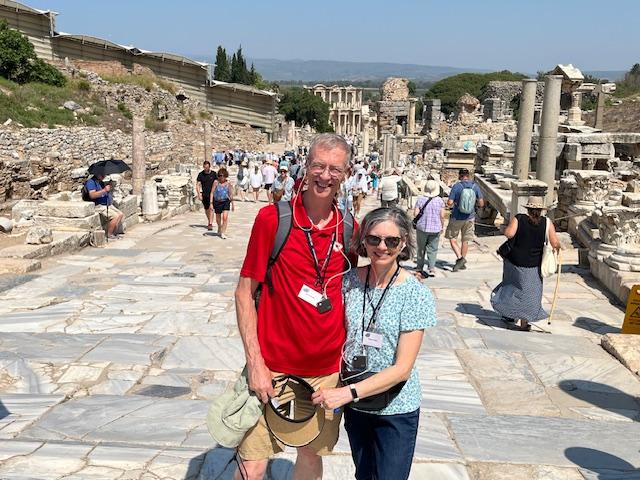
Ephesus was a city of 250 to 300 thousand people sprawled down hillsides near an ancient harbor. (I think every ancient city was set on a high hill!) It featured a large library which is visible in the far background.
The picture below shows some of the ruins of Corinth behind the flowers, but the city stretched to the top of the rocky hill where a temple was located.
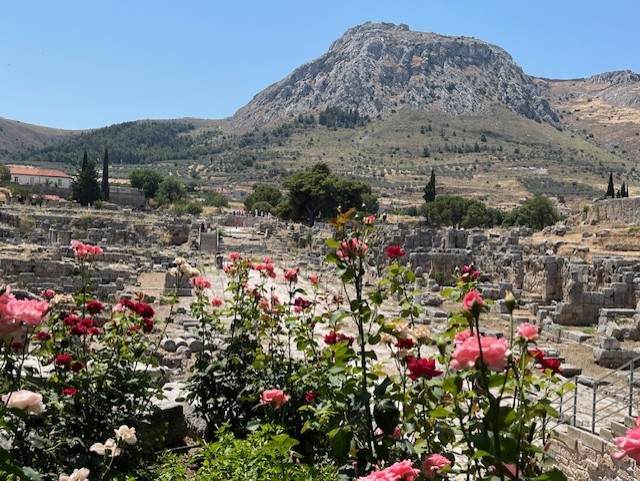
The temple to Apollo (below) was in the lower area. I was impressed by the fact that these columns are not made of stacked blocks like most we saw, but were each carved as a single piece of stone.
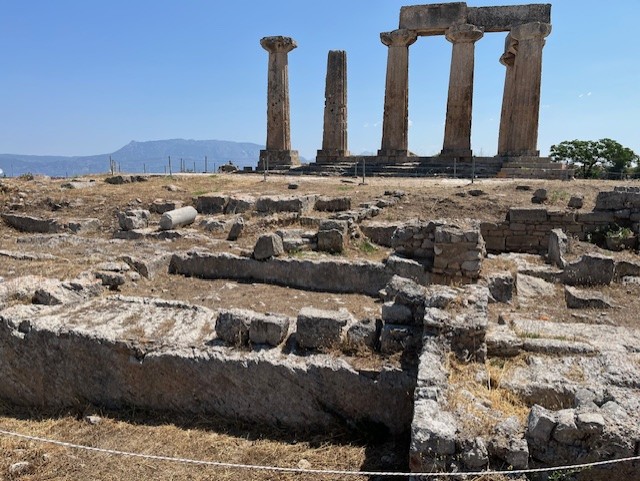
Cities featured water piped to city fountains through aquaducts and clay pipes. Water was also piped into the homes of the wealthy. Public toilets where crude by modern standards, but water flowed through the pits to remove the waste. Below you can see the marble seats of the public toilet of Ephesus. Notice the lack of privacy dividers. You may not realize that separate toilets for each gender did not always exist–men and women used the same one.
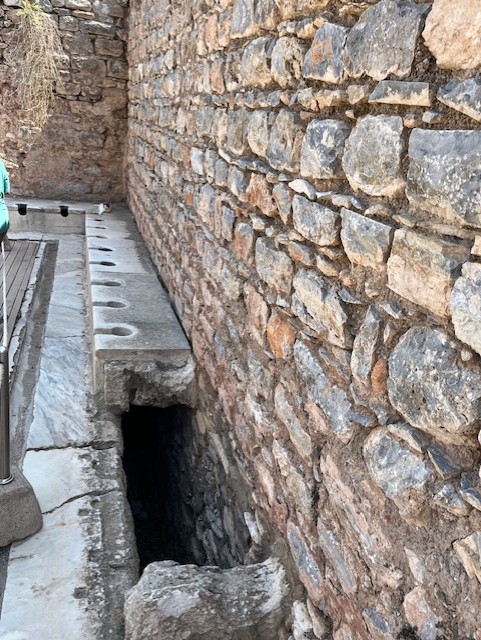
Some of the wealthy houses in Ephesus even had private toilets, running water, and pipes laced through the walls to provide heat. They were decorated with mosaic tiled floors and fresco walls as shown below.
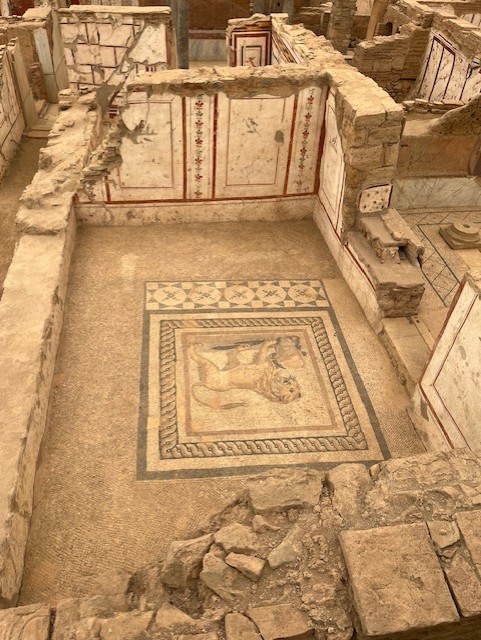
Cities also had other features Below is the gymnasium (think a school or place of learning) of Sardis with the entrance to the baths in the background.
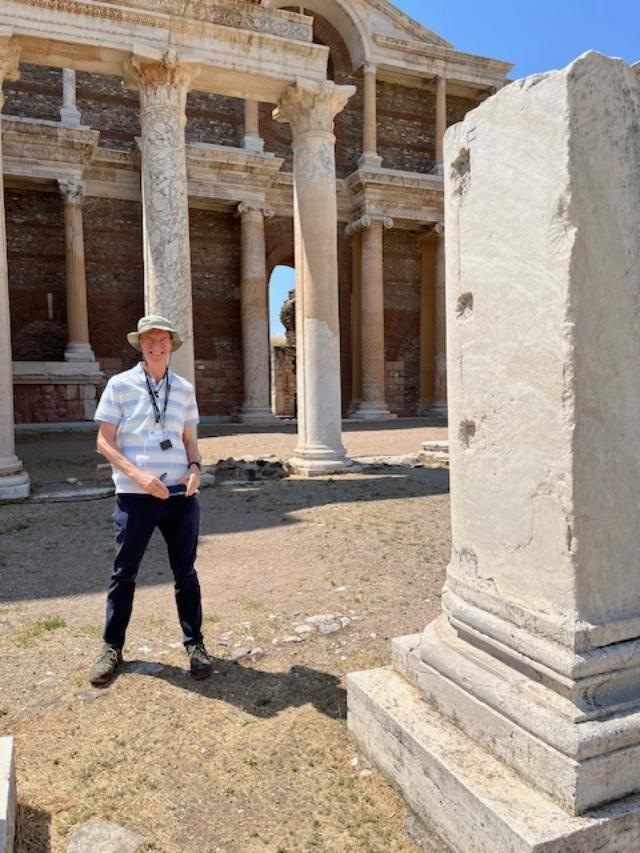
Theaters were also popular. Here is one of the theaters of Laodicea. It has been restored and concerts are held there today.
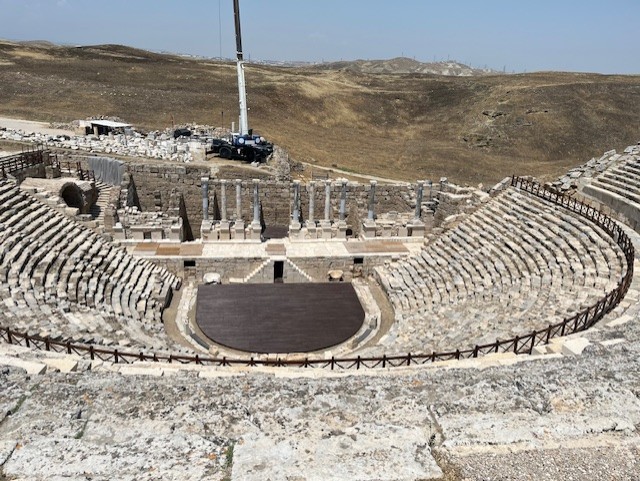
Vacation was a pleasant break from writing and provided me with valuable insights. Pictures and Google Earth simply can’t provide the feel of the sun’s heat or the buffeting of the wind atop an ancient acropolis. Hopefully, my experience will provide authenticity to future stories I write for you!
If you are interested in a similar trip, you might check out Pilgrim Tours.

Annabelle Easley
I enjoyed this blog. Thank you for some surprising insights.